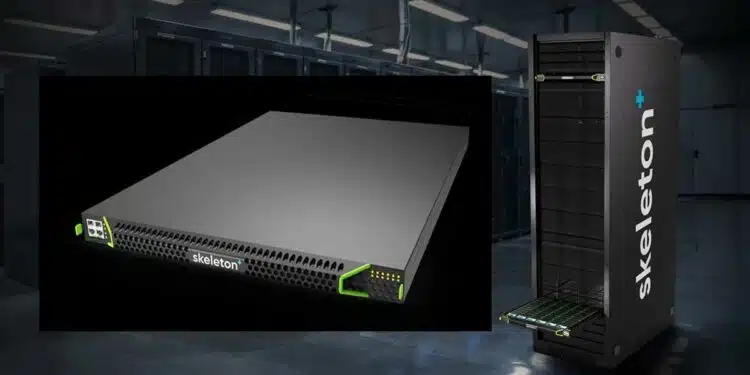Skeleton’s GrapheneGPU, has revolutionized AI data center energy efficiency by reducing energy consumption by 44% while simultaneously enhancing computing power by 40%.
Skeleton Technologies, a global leader in high-power energy storage, introduces GrapheneGPU, a high-performance system designed to address the critical challenge of AI growth: energy inefficiency and limitations in power infrastructure.
Skeleton’s proprietary Curved Graphene material used by supercapacitors significantly reduces AI energy consumption by up to 45% and lowers power connection requirements by 44%, while simultaneously enhancing computing performance in FLOPS by 40%.
By substantially reducing energy use and peak power demand, these improvements lead to proportional reductions in both capital investments and operational costs in AI infrastructure.
GrapheneGPU has successfully undergone validation under the most demanding power profiles set by leading hyperscalers. Initial shipments are scheduled to commence from Skeleton’s German facility in June 2025. US manufacturing expansion is anticipated for the first quarter of 2026 to meet the growing international demand.
AI data centers currently consume up to twice the energy they require. Inefficiencies stemming from limited grid capacity, infrastructure constraints, and intermittent outages continue to accumulate. According to the International Energy Agency, global electricity consumption by AI data centers is projected to reach 945 TWh by 2030. The US will contribute approximately 240 TWh, while Europe will surpass 150 TWh. AI data centers are poised to become the primary drivers of electricity demand growth in both regions. Energy waste and constrained power availability are emerging as the primary obstacles to AI growth and the development of AI data centers globally.
GPUs, a key contributor to these issues, experience fluctuating power demands that can cycle between 0% and 100% within seconds. During intensive processing, they experience sharp spikes, followed by idle periods. To manage these fluctuations and avoid grid instability or equipment damage, many data centers currently rely on artificial loads, commonly known as dummy loads, during idle phases to maintain a constant power draw. While this approach stabilizes operations, it leads to significant energy losses, with up to 45% of energy wasted as heat, offering no computational benefit. Additionally, peak power availability is constrained by limited grid capacity, and the construction of new substations and transmission lines can take up to 7 years.
GrapheneGPU addresses these challenges by storing energy during idle periods and releasing it during peak demand, effectively smoothing out the fluctuations. This eliminates the need for dummy loads, reduces cooling requirements, and enables GPUs to operate more efficiently.
As AI computing and energy demands double annually, AI data centers are facing a critical bottleneck. GrapheneGPU delivers up to 40% more computing with the same energy footprint, while cutting both capital and operating costs by reducing grid upgrade needs, energy waste, and cooling, said Taavi Madiberk, CEO of Skeleton Technologies.
“Powered by our patented Curved Graphene, this is a fundamental shift in how AI infrastructure can scale — sustainably and economically“.
GrapheneGPU, powered by Skeleton Technologies’ patented Curved Graphene, combines peak-shaving supercapacitors with AI-driven control software to smooth out GPU power spikes and significantly enhance energy efficiency. Fully compatible with existing infrastructure, it enables sustainable AI scaling while reducing reliance on additional power generation or costly grid upgrades. Validated under real-world GPU load profiles, GrapheneGPU is certified for data center peak shaving and ready for immediate deployment.
By cutting energy waste and thermal stress, it helps data centers meet performance targets without compromising environmental goals—setting a new standard for efficient, climate-resilient AI infrastructure.































